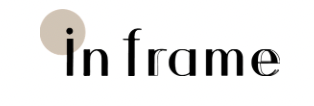Exclusive with Kritha, owner of sustainable jewelry brand Krithaa
In conversation with Kritha, owner of sustainable jewelry brand Krithaa
How do you feel about your work being featured at one of the most coveted events of the world?
Happy. I don’t think it will fully sink in until the day gets here.
Tell us a little about your journey as a brand and an individual
I didn’t start right away with a brand. I was a student who made jewelry for herself that people around her liked. There’s always that personal element to my designs. I never studied jewelry design and in a way, my shortcomings became the character of my work. I think it’s more about being true to your skillset, and accept the outcome while continuing to learn.
When did Krithaa come into being?
2015. Ofcourse, but the aesthetic has evolved with time. My collections largely reflect my personal journeys. My first collection was very fierce and steampunk. Later, it became more refined. The next collection was darker. I always look at things in retrospect. These are connections I realised only later. As for the latest collection, according to where I am right now, it’s naturally taken a form that’s more feminine and fluid.
I was looking at your Instagram feed earlier, and to describe it in a word; Empowering. You’re a woman owned brand coming from an ethically conscious space. What message do you aspire to put out to the world at NYFW?
The way I studied design at my university was just to stay true to the material, the overall context, and yourself. I believe if that’s done, it manifests in how your process turns out. The final work is just a by-product of that process.
I don’t decide I want to make a sustainable design and then work backwards. For me, it’s just been staying true to myself. The rest will follow. I keep words as little as possible. It’s good to see how the customer/viewer receive my work when they’re not stuck to the narrative that I’ve built. I like the work to speak for itself.
Krithaa work explores the idea that ‘a jewelry piece wears the human body’, not the other way around. For me, wearing a heavy jewelry piece is interesting, because I can always mold myself to it. Ofcourse, commercially it poses a concern now and then, but for my creative satisfaction, that’s something I truly believe in. You’ll see a lot of oversized jewelry pieces in my collections. That’s a very meaningful space to me. Even if it goes on a minimal line, it will always be jewelry first and then the human for me.
I love that tagline, Ornaments that wear the body. Was that always your philosophy or did your work eventually lead you there?
I think that was always where I came from, subconsciously. It just took me a while to put it into words. It was always important to me that my customers understood that aspect of my work. After a point, it just happened. I’m nervous when it comes to talking. But with my work, it’s always just flowed out of me. I was true to what I was feeling about my work all these years. The connection between me and my jewelry comes from a very personal space and creating from there is very empowering for me.
What is your inspiration for the fashion week collection?
Dhanya and I mostly looked at the form and expression. The ones I sent form a narrative, though they’re not all from the same collection. There’s a strong character, an element of spontaneity in looking at a metal and stamping it to a form that wasn’t sketched earlier.
I like personifying my metals. I think of brass as a glorious state of existence. The way I see it, a woman wearing brass is someone adorning the feminine essence in the most glorious way. I think they all come together really well.
How has the pandemic changed things for you?
I think the biggest thing practically, is not having to be in the rut of creating collection after collection.. I used to feel the pressure of designing one line a year. The pandemic took that away, even though it was largely self-induced.
I’m more free in my creative process now, taking it one piece after another. I’m able to pay much more attention to individual pieces and that’s a big takeaway. I’ve done quite a few shows in the past few years. I consciously choose to do shows because I like interacting with the customers in person. Most of my audience are people I have collected in that way, over the years.
Instagram is the closest alternative now, and I’ve found it a really beneficial platform for creators. After all, without it Dhanya I wouldn’t have met!




